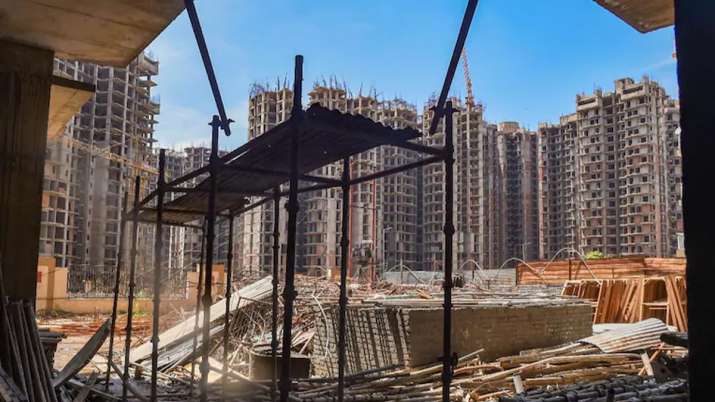
India expected to grow at 7.2% in 2021: UN report
India is expected to grow at 7.2 per cent in 2021 but economic growth may decline next year, according to a United Nations report that said the country’s recovery from the ongoing humanitarian and crippling crisis of the COVID-19 pandemic. Constrained by economic costs and negatives. The effect of food price inflation on private consumption.
The UNCTAD Trade and Development Report 2021, released here on Wednesday, voiced a cautiously optimistic note, to say that the global economy is poised for a strong recovery in 2021, although there is a good deal of uncertainty surrounding the details at the regional and country level. Is. second half of the year.
After falling by 3.5 per cent in 2020, the United Nations Conference on Trade and Development (UNCTAD) expects world output to increase by 5.3 per cent this year, partly recovering the ground lost in 2020.
The report said that India contracted by 7 per cent in 2020 and is expected to grow by 7.2 per cent in 2021.
“Recovery in India is hampered by the ongoing human and economic cost of COVID-19 and the negative impact of food price inflation on private consumption,” the UNCTAD report said.
The report said that India will register economic growth of 6.7 percent in 2022, which is slower than the country’s expected 2021 growth rate.
However, despite the slow growth rate of 6.7 per cent, India will continue to be the fastest growing major economy in the world next year.
“India, which experienced a contraction of 7.0 per cent in 2020, showed strong quarterly growth of 1.9 per cent in Q1 2021, on the back of momentum in the second half of 2020 and supported by government spending in goods and services,” the report stated in.
“Meanwhile, a severe and widely unpredictable second wave of the pandemic, compounded by barriers to vaccine roll out, on top of rising food and general price inflation, hit the country in the second quarter, widespread lockdowns and heavy consumption and investment adjustments. forced to,” it said.
It noted that income and wealth inequalities have widened in the country, and “social unrest has increased”.
The Central Bank anticipates another sharp contraction (quarter-on-quarter) in the second quarter, which is followed by a rebound.
“Given the inherent vulnerabilities in tackling the pandemic and restoring employment and income, the overall growth is projected to be 7.2 per cent in 2021, above pre-COVID-19 income levels,” the report said. Insufficient to regain it.”
“Going forward, assuming a resurgence of the pandemic to the degree experienced in the second wave, the revitalization of private sector activity, still subject to a slow recovery of jobs, is likely to coincide with a more unfavorable policy environment, particularly On the fiscal front, and with continued pressure on the trade balance. Under these circumstances, the economy is expected to decline to a growth rate of 6.7 per cent in 2022,” the report said.
Further, it said that in India, consumer inflation was already at 6 per cent before the pandemic. The COVID-19 shock caused a temporary drop in prices, but as the economy recovered and food prices picked up, the country returned to a 6 per cent inflation rate in mid-2021.
UNCTAD said global growth is expected to reach 5.3 percent this year, the fastest in nearly half a century, with some countries restoring or even exceeding their 2019 production levels by the end of 2021 .
“However, the global picture beyond 2021 remains shrouded in uncertainty,” it said, adding that looking ahead, UNCTAD expects world production to grow by 3.6 per cent in 2022.
South Asia suffered a sharp contraction of 5.6 per cent in 2020, with economic activity in the region halted by widespread restrictions.
The lack of public health systems and a high level of informality exacerbated the impact of the pandemic in terms of both health and economic consequences, which was reflected in a steep increase in the poverty rate, the report said.
UNCTAD expects the sector to expand by 5.8 per cent in 2021, with signs of a more vigorous recovery at the start of the year due to a sharp increase in infections during the second quarter of 2021.
In addition, limited progress in terms of vaccine rollout is making countries in the region more susceptible to future outbreaks. For 2022, UNCTAD expects the sector’s growth rate to be moderate to 5.7 percent.
The US is projected to grow at 5.7 per cent in 2021 and is expected to grow at three per cent in GDP next year after that.
“In the US, the rapid recovery in the United States is expected to boost GDP by 2 percent from its pre-COVID-19 level,” it said.
China, projected to grow at 8.3 percent this year, will slow its growth to 5.7 percent in 2022.
The world needs more effective multilateral coordination, the report said, without which recovery efforts in advanced countries would hurt development prospects in the South and exacerbate existing inequalities.
UNCTAD Secretary-General Rebecca Grinspan said, “The global recovery from the pandemic must reach beyond emergency spending and infrastructure investment to adopt a multilateral model for trade and development.”
“A solid rethinking of priorities only holds hope to address the inequality and climate crises that have come to define our era.”
.